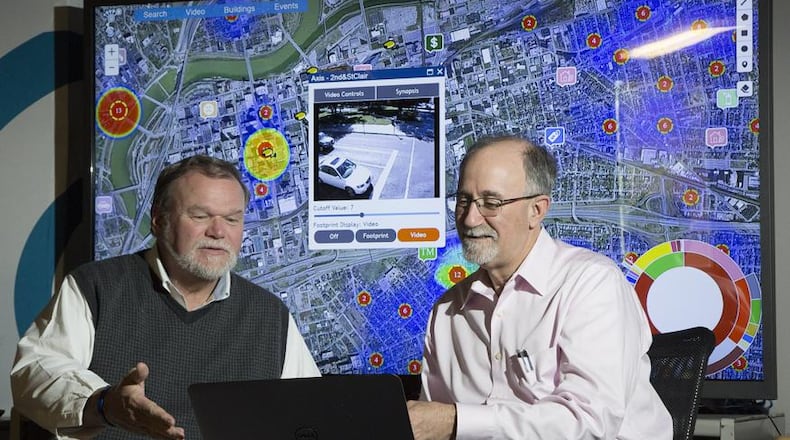And the lag between contract performance and reimbursement from the federal government, while always painful, is especially so these days, said John Leland, vice president of research for the University of Dayton, who oversees one of the Dayton area’s most important defense contractors, the University of Dayton Research Institute (UDRI).
“Our concern is the same as everyone else who is doing contract work for the federal government, period,” Leland said Thursday. “How do we continue to meet our obligations to the nation’s defense mission at a time when we’re confronted with challenges that are confounding our ability to do that?”
What many defense contractors says they need most at the moment is greater clarity, he said.
“The whole industry has been clamoring for guidance,” Leland said in an interview. “Guidance has come out, but it has been maybe not as specific as it could be. It leaves a lot of discretion, in terms of being enacted, to the very lowest levels within the department.”
Usually, Leland likes the idea of delegation. But these are especially challenging times, he said.
“We’re at a time obviously of crisis here where perhaps more leadership is needed,” Leland said.
Asked if UDRI’s income is imperiled by the pandemic and the new restrictions imposed by military installations, Leland said, “Everyone’s (income) is.”
Today has been less challenging than 10 days ago, said Joe Sciabica, president of Beavercreek’s Universal Technology Corp.
“There seemingly are new challenges with every news conference, and each employee hears things differently — so we’re making sure to keep channels of communication open,” Sciabica said in an email. “I and my management team are spending a significant amount of time each day on the latest of the COVID-19 updates, legislation releases, interpretations, webinars, etc. and then interpreting that info and flowing it out across our team.
Six representatives and both of Ohio’s senators sent a letter this week urging Defense Secretary Mark Esper to offer clear guidelines to protect the health of defense contractors at Wright-Patterson Air Force Base’s biggest commands.
Thirteen Ohio defense industry companies contacted the legislators with concerns about exposure to COVID-19, the letter states.
Leland said Thursday he was among those who contacted lawmakers.
“We have been contacted by 13 small businesses in Ohio that have research and development contracts with AFRL (Air Force Research Lab),” stated the letter that appeared over the signatures of Sens. Sherrod Brown and Rob Portman, U.S. Reps. Mike Turner, R-Dayton, Warren Davidson, R-Troy, and others. “They have raised concerns about the ongoing spread of COVID-19 and an absence of sufficient guidance on how they may continue to meet their contractual obligations to DoD during this crisis.
Jessica Maxwell, a Department of Defense spokeswoman, said Thursday the department will respond directly to the congressional delegation that authored the letter.
Nina Joshi, chief executive and president of Beavercreek defense contractor UES Inc., said UES is fortunate in that much of its workforce can work remotely.
“Our on-site, hands-on work may have halted, but this allows time for data analysis and thoughtful project planning, and also learning new areas that may be beneficial to the Air Force when hands-on work resumes,” Joshi said in an email.
At Wright-Patterson, leaders of the 88th Air Base Wing say they have sought to protect workers, urging base commanders to allow employees to “telework” from home when that is possible, while at the same time letting commanders require essential workers report to labs and offices when that is necessary, too.
Indeed, Ohio congressional delegation’s letter specifically asks Esper and the Defense Department to both permit telework while allowing workers access to military facilities when necessary.
Elaine Bryant, executive vice president of aerospace and defense at the Dayton Development Corp., said each contractor faces unique challenges.
“One of the main concerns is the access to facilities and worksites on the base,” Bryant said.
Mission-essential designations are delegated to their units, and contractors need to work with program managers and contracting officers to determine the best course of action for base access to accomplish the mission, she said.
“In turn, we ask that those government contracting officers provide maximum flexibility while following DoD guidance in light of the COVID-19 pandemic,” Bryant said.
About the Author




